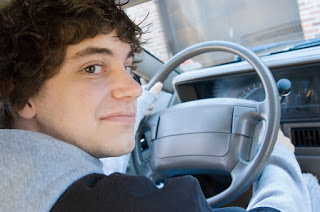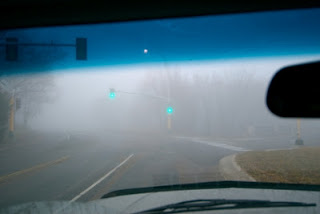Tag Archive: teen driver

Second Half of 100 Deadliest Days For Teens
July 18, 2014
We are halfway through the 100 deadliest days for teens; that period between Memorial Day and Labor Day when, according to the AAA, the chances for teens to be involved in a crash increase by 26%. Read more: Police, AAA team up to help keep teen drivers safe

Help Your Teen Become a Better Driver
December 26, 2013
In a recent AAA article, it has been examined that parents who ensure that their teens receive enough practice are more likely to help their teens become safer drivers. Also, though quite unrelated driving, AAA feels that parents who spend more time with their teen drivers prior to them driving on their own also effectively aide in their teens’ driving abilities.
Here at Lowest Price Traffic School, we also place a great deal of emphasis on parental involvement in teen driving. With editionslike Driver Education Handbook for Parents, as well as our Parent Taught Teen Driving course, we help parents more effectively guide their teens into becoming advanced early drivers.
“Unfortunately, teens still have the highest crash rate out of any age group, so it is critical for parents to be involved and use evidence-based techniques that work,” said Dr. William Van Tassel, AAA Manager of Driver Training Programs. “These recommended coaching techniques may seem rather obvious, yet research findings show that parents aren’t regularly practicing these techniques.”
A recent study that surveyed parents and teens during the process of learning to drive found that:
- Nearly half of parents reported that they wanted their teens to get “a lot of practice,” when asked about their teens’ driving skills. Only about one in four parents mentioned practicing in a various situations or conditions, such as bad weather, heavy traffic, or on unfamiliar roads.
- Roughly 47 percent reported that they have not allowed their teen to drive in an unsupervised area, even if they have passed their driving test and received their license.
- Relatively few parents were observed imparting rare driving tips to their teens – such as visual scanning or anticipating other drivers’ behaviors.
Parents should ultimately make sure that their teens receive ample driving practice, which goes beyond getting practice on routine trips on familiar roads. The apparent thought here is that teens will be much more competent drivers, or at least more attentive, in a relatively unfamiliar setting.
If you are looking to bolster your teenager’s driving abilities, then our courses are ideal for you! At Lowest Price Traffic School, we are proud to foster this idea of parent-lead teenage driving safety, and is why we created the programs in the first place. Your children already look to you to learn the rest of life’s lessons, but unlike a few lessons that come from their own personal experiences, the more knowledge you throw their way, the better they will retain the information!

Teen Emotions and Driving
May 5, 2012
Upset? Angry? Emotional? We all get that way. It is a natural part of life and sometimes a natural part of the day. Life and events are out of our control and so we all are thrown hurdles to get through; many times unexpectedly. Dealing with the emotions of what comes along can be complicated. But what you want to avoid is getting behind the wheel when you are emotional, angry or upset.
Many times people let their emotions get the best of them. When you are driving, you have to be able to give it your full attention. The attitude you have is your state of mind at any given moment, whether that be happy or sad, excited or full of anxiety.
Your state of mind controls how you behave and react to situations. The actions and reactions are a normal part of everyday living and interaction with others. When you are emotional behind the wheel, it can interfere with your ability to think clearly and inadvertently create a mental distraction.
For instance, if you are worried or upset or thinking through a complicated issue while driving, you may not notice your upcoming exit or turn, causing you to miss it or react suddenly. You become an inattentive driver. You may fail to scan the environment ahead or notice debris in the roadway. When you are angry or upset, you may increase your risk taking and pull out in front of another vehicle, cut someone off, or tailgate.
Positive emotions are dangerous too. Even when you’ve received the best of news there can be a lack of concentration when you get behind the wheel leading to increased reaction times. You can lose your ability to notice what other drivers are doing, anticipate their next moves and determine how you will respond.
Driving when emotions are high can interrupt your ability to process information in the driving environment and incite you to act out your emotions. You can lose your ability to perform skills that require precise timing to complete. Physically, your body can react in many ways including increases in heart beat and respiration rates and spikes adrenaline levels.
Teens’ brains are still developing and are very vulnerable to their emotions and the emotions of others. They usually have less means and independence than they would like, which can increase their frustrations and intensify their emotions.
So what do you do?
- Set a good example and choose not to drive when upset.
- Recognize the role emotions play when driving. Look at examples of other drivers on the roadway who maybe mental distracted and discuss the danger they pose together.
- Examine your and your teenager’s emotional make up and discuss coping strategies.
- Identify and predict situations that could cause both positive and negative emotions.
- Ask for a commitment from your teen to delay driving when they are emotional or upset. Get a verbal agreement and include it in your Parent & Teen Driving Contract.
What are some coping strategies?
- If you are excited or upset, ask someone else to drive you.
- Give yourself a few minutes and quiet your mind. Close your eyes and take a several deep breaths.
- Remember that you can’t control what happens to you, you can only control how you respond to it and many times that determines your ultimate success.
- Separate the actions, reactions and emotions from the people and the situations: John’s immature vs. John’s acting immature.
- If you can, take a short walk or do some quick exercises to settle your body down.
- Leave a few minutes early to give yourself extra time to get to your destination, so you won’t be hurried.
If you become upset while you are driving, pull over to a safe place. Take a few minutes, walk around, and breathe deeply. Avoid the risk and avoid the consequences…Drive with a safe attitude.
Learn more about the Facts Behind Teen Crashes.

Teen Death Rates Decline In States With Strong Graduated Driver License Laws
April 2, 2012
A 2006 study by the Johns Hopkins Bloomberg School of Public Health that showed Graduated Driver License Laws (GDLs) reduced teen death rates by an average of 11% has been backed up by at least two states that have shown a significant decline in their teen fatality rate after enactment of tough new GDLs.
New Jersey’s strong GDL laws will become even stronger with new GDL regulations as a result of recommendations by the Teen Driver Study Commission. The new laws or regulations are:
- No plea bargains for GDL holders (teens can’t plea bargain away points for traffic violations). Teens who accumulate 3 or more points, must attend a 4-hour MVC Probationary Driver Program and be monitored for 12 months. Any accumulation of points during the monitoring period will result in a 90 day license suspension.
- Use of a decal on the vehicle to identify drivers who hold a learner’s permit or provisional license.
- 11 PM curfew for all drivers under the age of 21 who hold a permit or provisional license.
- Limit of passengers to just one – regardless of family affiliation.
The Illinois Secretary of State introduced figures that showed a 53% drop in teen deaths between 2007 and the first 9 months of 2009. Illinois sanctions on drivers during the Initial Licensing Phase include:
- Two moving violation convictions occurring within a 24-month period will result in a minimum one-month driver’s license suspension. Suspension length is determined by the seriousness of the offenses and the driver’s prior driving history. An additional driver’s license suspension will result for each subsequent moving violation following the initial suspension.
- Any moving violation conviction that occurs within the first year of licensure will result in a six-month extension of the passenger limitation, which allows no more than one unrelated passenger under age 20.
- Suspended drivers are required to attend a remedial education course, may be retested and must pay a $70 reinstatement fee.
Parents who don’t live in a state with a strong GDL law, can impose their own strict restrictions. If you are not sure what the GDL law is in your state, visit your state’s web site or: http://www.iihs.org/iihs/topics/t/teenagers/qanda#teenagers–graduated-driver-licensing

Managing Speed: Tips for Teen Drivers
March 9, 2012
A 2009 analysis of speeding-related crashes by the National Highway Traffic Safety Administration (NHTSA) shows that following the speed limit is not enough to prevent a crash when conditions warrant a reduction in speed. The study showed that in speeding-related crashes that caused one or more injuries, 26% of the crashes were contributed to be exceeding the posted speed limit, while 74% were due to driving too fast for conditions. In property-damage-only crashes where speed was a contributing factor, 18% of the crashes were due to exceeding the posted speed limit and 82% of the crashes were contributed to by driving too fast for conditions.
Drivers should reduce their speed:
- immediately when it begins to rain and when driving through standing water. Roads become very slippery just after the rain begins, because the rainwater mixes with oil on the road that has been dropped from passing vehicles. Driving too fast on wet roads can result in skidding, when the vehicle loses traction with the road and the driver loses control of the vehicle. Never drive through standing water if you do not know how deep it is.
- in foggy or smoky conditions. Fog and smoke make it difficult to see ahead, and reducing speed reduces stopping distance.
- before a curve. Too often, drivers realize that they are moving too fast when they are already in the curve, but lowering speed in a curve results in a loss of traction that could cause a skid. Always reduce speed before entering the curve.
- in construction zones. Lower speed limits are usually posted in construction zones, but the new speed limit may not be low enough, especially for new drivers. The distraction of all the activity in the work zone and changes in the road surface can cause more difficulties for drivers who are inexperienced.
- around school zones and playgrounds. Children are often present when the lowered speed limits are not in effect. Children are unpredictable and may walk, skate or bike into the road without checking for traffic. Be extra careful around school zones!
- at night. Visibility is reduced at night; street lights and the vehicle’s headlights cannot entirely make up for this.
